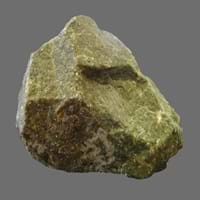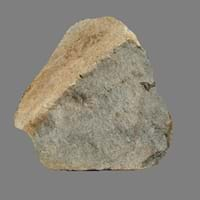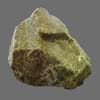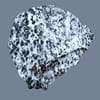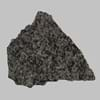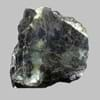Definition
Dunite is a green to brownish coarse-grained igneous rock mainly consisting of olivine
Lamprophyre is uncommon igneous rocks primarily occurring as dikes, lopoliths, laccoliths, stocks and small intrusions
Origin
New Zealand
Unknown
Discoverer
Ferdinand von Hochstetter
Unknown
Etymology
From the name of Dun Mountain, New Zealand, + -ite1
From Greek lampros bright and shining + porphureos purple
Class
Igneous Rocks
Igneous Rocks
Sub-Class
Durable Rock, Medium Hardness Rock
Durable Rock, Medium Hardness Rock
Other Categories
Coarse Grained Rock, Opaque Rock
Coarse Grained Rock, Fine Grained Rock, Opaque Rock
Texture
Phaneritic
Porphyritic
Color
Dark Greenish - Grey
Black, Bluish - Grey, Brown, Dark Greenish - Grey, Green, Grey
Durability
Durable
Durable
Scratch Resistant
Yes
Yes
Appearance
Rough and Shiny
Dull, Banded and Foilated
Interior Uses
Decorative Aggregates, Interior Decoration
Decorative Aggregates, Interior Decoration
Exterior Uses
As Building Stone, As Facing Stone, Garden Decoration, Paving Stone
As Building Stone, Office Buildings
Other Architectural Uses
Curbing
Curbing
Construction Industry
As Dimension Stone, Cement Manufacture, Construction Aggregate, for Road Aggregate, Making natural cement, Raw material for the manufacture of mortar
As Dimension Stone, Cement Manufacture, for Road Aggregate, Making natural cement, Manufacture of Magnesium and Dolomite Refractories
Medical Industry
Not Yet Used
Taken as a Supplement for Calcium or Magnesium
Antiquity Uses
Artifacts, Monuments, Sculpture, Small Figurines
Artifacts, Monuments, Sculpture
Commercial Uses
Creating Artwork, Gemstone, Jewelry, Source of Chromite, Platinum, Nickel and Garnet, Source of Diamonds
An Oil and Gas Reservoir, As a Feed Additive for Livestock, Gemstone, Metallurgical Flux, Production of Lime, Soil Conditioner, Source of Magnesia (MgO)
Types
Not Available
Minette, Alnoite, Camptonite, Monchiquite, Fourchite, Vogesite, Appinite and Spessartite
Features
Constitutes upper part of the Earth's mantle, Generally rough to touch, Host rock for Diamond, Is one of the oldest rock
Always found as volcanic pipes over deep continental crust, Host rock for Diamond, Is one of the oldest rock, Surfaces are often shiny
Archaeological Significance
Famous Monuments
Data Not Available
Data Not Available
Famous Sculptures
Data Not Available
Data Not Available
Formation
Dunite is a plutonic ultramafic igneous rock consisting almost m olivine. It can be formed in two ways.
Lamprophyre formation takes place deep beneath the Earth’s surface at around 150 to 450 kilometres, and are erupted rapidly and violently.
Mineral Content
Amphibole, Chromite, Garnet, Magnesium, Olivine, Phlogopite, Plagioclase, Pyroxene
Amphibole, Carbonate, Garnet, Micas, Olivine, Phlogopite, Pyroxene
Compound Content
Ca, CaO, Fe, Potassium, Silicon Dioxide, Sodium, Titanium Dioxide
Aluminium Oxide, NaCl, CaO, Iron(III) Oxide, FeO, Potassium Oxide, MgO, MnO, Sodium Oxide, Silicon Dioxide, Titanium Dioxide
Types of Metamorphism
Burial Metamorphism, Cataclastic Metamorphism, Contact Metamorphism
Cataclastic Metamorphism, Impact Metamorphism
Types of Weathering
Biological Weathering, Chemical Weathering, Mechanical Weathering
Biological Weathering
Types of Erosion
Coastal Erosion, Glacier Erosion, Water Erosion
Chemical Erosion, Water Erosion, Wind Erosion
Grain Size
Coarse Grained
Fine to Coarse Grained
Fracture
Irregular
Conchoidal
Porosity
Less Porous
Very Less Porous
Luster
Shiny
Subvitreous to Dull
Compressive Strength
Not Available
Cleavage
Imperfect
Conchoidal
Toughness
2.1
Not Available
Specific Gravity
3-3.01
2.86-2.87
Transparency
Translucent to Opaque
Translucent to Opaque
Density
2.84-2.85 g/cm3
2.95-2.96 g/cm3
Specific Heat Capacity
Not Available
Resistance
Heat Resistant, Pressure Resistant, Wear Resistant
Heat Resistant, Impact Resistant
Deposits in Eastern Continents
Asia
China, India, Indonesia, Kazakhstan, Russia, South Korea, Thailand, Turkey
Russia
Africa
Morocco, South Africa
Angola, Botswana, Cameroon, Ethiopia, South Africa
Europe
Finland, France, Georgia, Germany, Great Britain, Italy, Kazakhstan, Netherlands, Norway, Spain, Switzerland, Venezuela
England, Hungary, Iceland, United Kingdom
Others
Not Yet Found
Antarctica, Greenland
Deposits in Western Continents
North America
Canada, USA
Canada, Mexico, USA
South America
Argentina, Brazil, Colombia, Ecuador, Venezuela
Argentina, Colombia, Ecuador
Deposits in Oceania Continent
Australia
New Zealand, Western Australia
New South Wales, New Zealand, Queensland, South Australia, Western Australia
Dunite vs Lamprophyre Characteristics
Though some rocks look identical, they have certain characteristics which distinguish them from others. Characteristics of rocks include texture, appearance, color, fracture, streak, hardness etc. Dunite vs Lamprophyre characteristics assist us to distinguish and recognize rocks. Also you can check about Properties of Dunite and Properties of Lamprophyre. Learn more about Dunite vs Lamprophyre in the next section. The interior uses of Dunite include Decorative aggregates and Interior decoration whereas the interior uses of Lamprophyre include Decorative aggregates and Interior decoration. Due to some exceptional properties of Dunite and Lamprophyre, they have various applications in construction industry. The uses of Dunite in construction industry include As dimension stone, Cement manufacture, Construction aggregate, For road aggregate, Making natural cement, Raw material for the manufacture of mortar and that of Lamprophyre include As dimension stone, Cement manufacture, For road aggregate, Making natural cement, Manufacture of magnesium and dolomite refractories.
More about Dunite and Lamprophyre
Here you can know more about Dunite and Lamprophyre. The life cycle of a rock consists of formation of rock, composition of rock and transformation of rock. The composition of Dunite and Lamprophyre consists of mineral content and compound content. The mineral content of Dunite includes Amphibole, Chromite, Garnet, Magnesium, Olivine, Phlogopite, Plagioclase, Pyroxene and mineral content of Lamprophyre includes Amphibole, Carbonate, Garnet, Micas, Olivine, Phlogopite, Pyroxene. You can also check out the list of all Igneous Rocks. When we have to compare Dunite vs Lamprophyre, the texture, color and appearance plays an important role in determining the type of rock. Dunite is available in dark greenish - grey colors whereas, Lamprophyre is available in black, bluish - grey, brown, dark greenish - grey, green, grey colors. Appearance of Dunite is Rough and Shiny and that of Lamprophyre is Dull, Banded and Foilated. Properties of rock is another aspect for Dunite vs Lamprophyre. The hardness of Dunite is 3.5-4 and that of Lamprophyre is 5-6. The types of Dunite are Not Available whereas types of Lamprophyre are Minette, Alnoite, Camptonite, Monchiquite, Fourchite, Vogesite, Appinite and Spessartite. Streak of rock is the color of powder produced when it is dragged across an unweathered surface. The streak of Dunite and Lamprophyre is white. The specific heat capacity of Dunite is 1.25 kJ/Kg K and that of Lamprophyre is Not Available. Depending on the properties like hardness, toughness, specific heat capacity, porosity etc., rocks are resistant to heat, wear, impact, etc.Dunite is heat resistant, pressure resistant, wear resistant whereas Lamprophyre is heat resistant, impact resistant.
